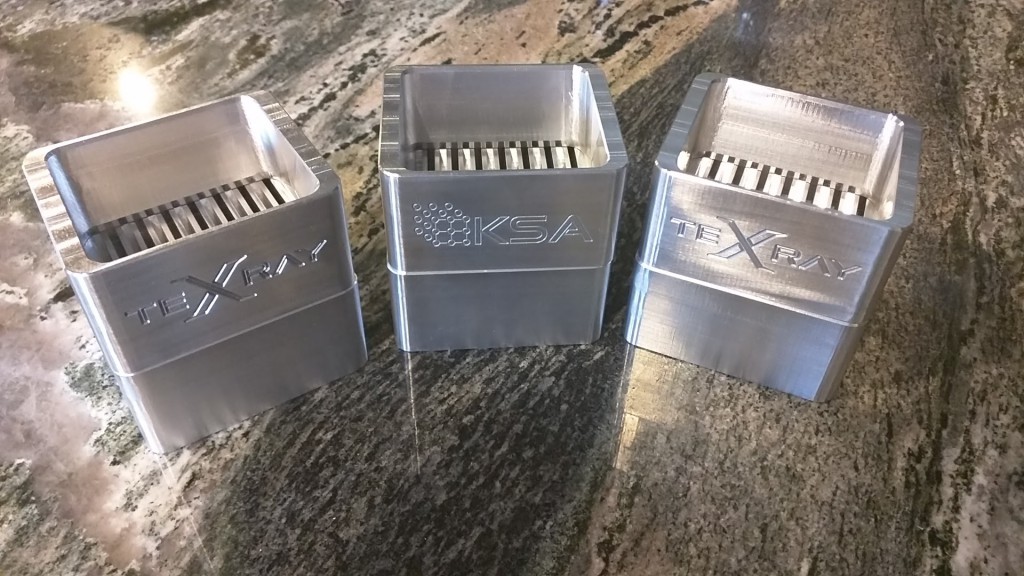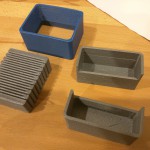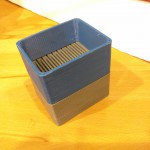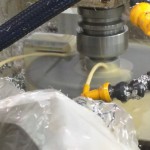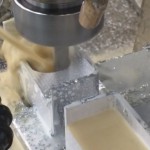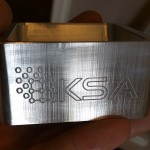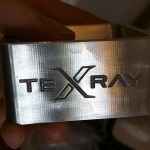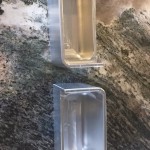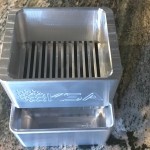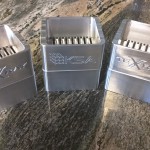We’ve been using additive fabrication (3D printing) and traditional subtractive methods (CNC machining) for years so when we started looking for a fun item to give away at the AAPG conference, we decided that a special Texray/KSA billet Aluminum microsplitter would be a great way to show our prospective clients that we’re not just in the business of chemical analysis, we’re passionate about it.
It is often quipped that sampling technique is the first and most important step toward accurate results. It’s easy to get carried away focusing on instrumental repeatability and analytical error, but these can only ensure accurate results for the aliquot measured. Some of our clients are only producing materials in mg batches, but we got to talk to the users on the other end of the spectrum at AAPG last month. These geologists are concerned with the chemistry of huge formations so getting a representative analysis is critical. They’ll take thousands of samples and combine the results into extremely complicated data sets. Many of the companies exhibiting there were selling data and data representation tools and nothing else. One company specialized in moving massive quantities of data over existing internet infrastructure. Apparently many of these outfits are generating so much data that the only way to move it rapidly enough is to ship boxes of hard disk drives from the exploration site to the central lab.
Those are extreme cases and require exotic solutions. The more common situation is that a client will ship 1kg of material for us to analyze. Sampling at this scale is still an important part of getting accurate results so while it would be very easy to simply spoon a measurable aliquot from the bag, we prefer a more precise and elegant solution. Microsplitters (also referred to as “rifflers”) are a great way for labs to reduce larger bulk materials with reasonable certainty that the they’ll retain a representative sample. These indispensable little devices consist of a top section (the funnel), a splitting mechanism (I call it the comb), and two or three receptacles (bins). The comb is not simply a series of straight slits, each one has a ramped bottom which alternates between one bin or the other. In this way, the sample is divided between the two bins more or less evenly. The contents of one bin are discarded and the contents of the other bin are dumped into the funnel to be split again until the desired volume is reached. This is why it’s best to have three bins on hand.
The gallery below includes a few pictures from the initial rapid prototyping through the finished product. In the end, I added some fancy legs to the side to make it easier to use. Note that the slits are cut with a slitting saw on out CNC milling machine. This allowed for slots which have rounded edges at the top and bottom. This is critical to avoid clumping and makes a very smooth transition at the top and bottom of the comb. We may offer these as a regular product if there is enough interest to justify a production run. If that happens, customized engraving would be an option. Contact us if you’re interested.

